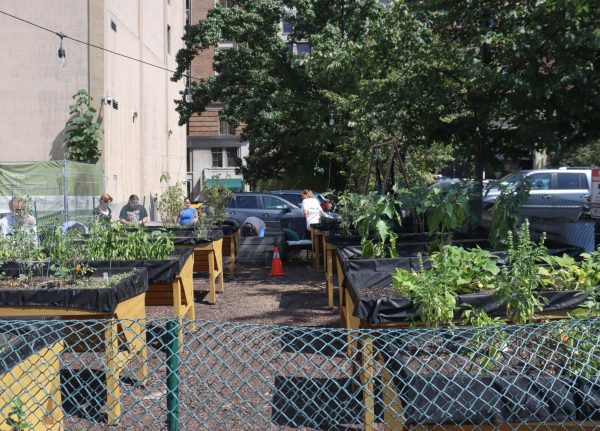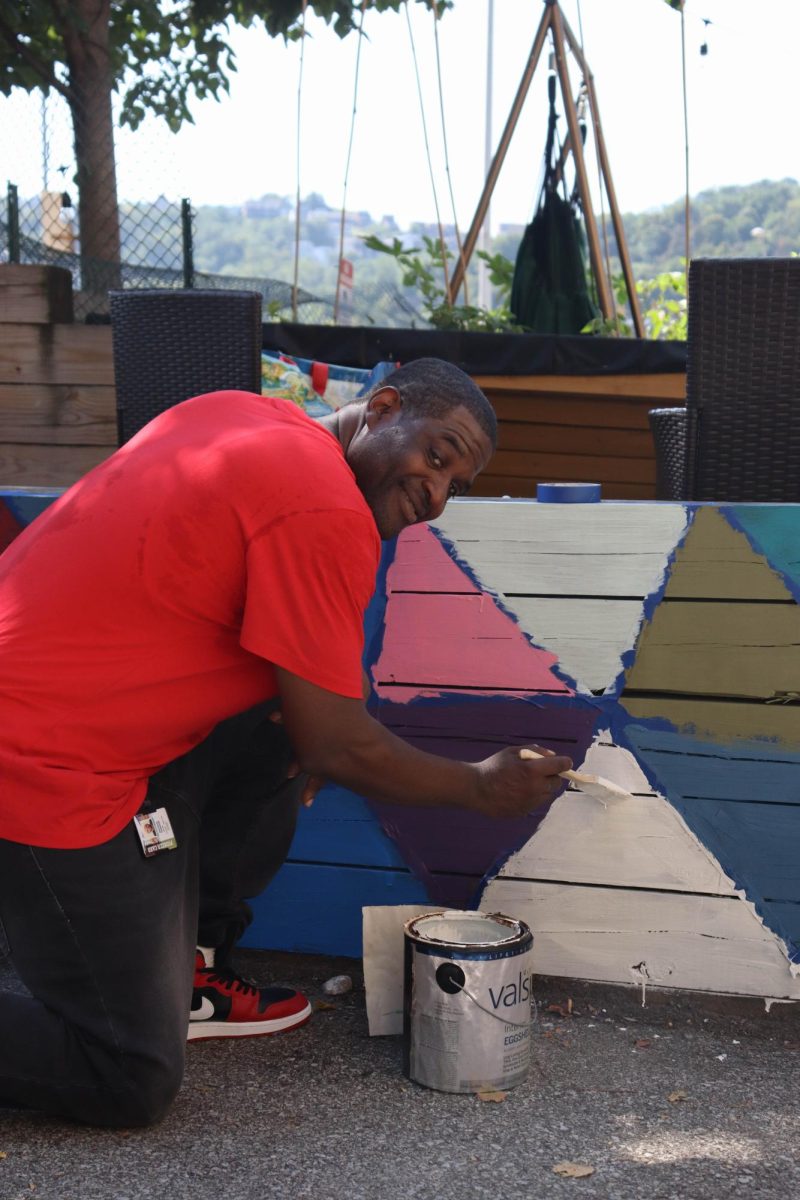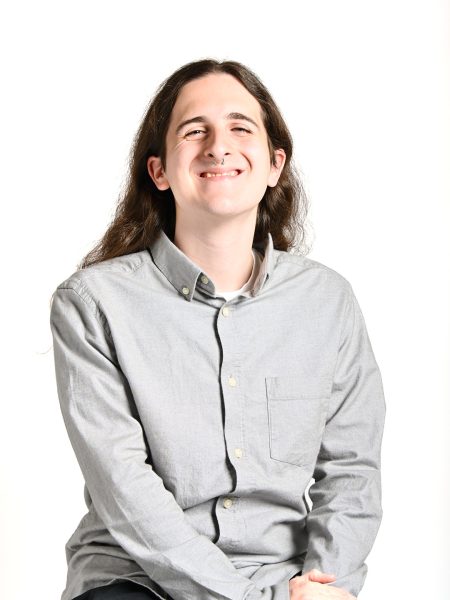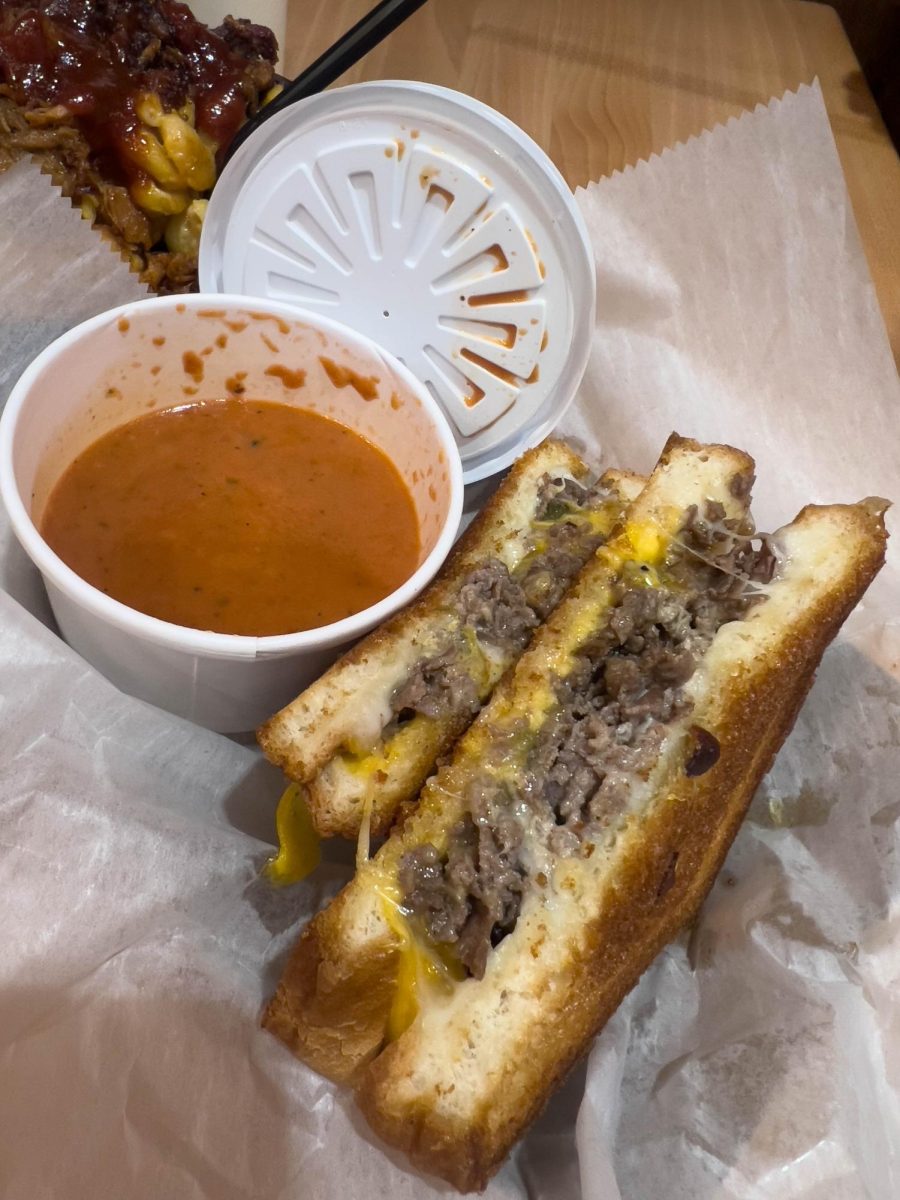Despite its footprint taking up as much space as a closet, the Pioneer Pantry’s mission hasn’t been small. Solving food insecurity on college campuses is no easy feat, but this little corner of campus has helped students get free ingredients for their next meals since 2017.
While the closet of produce may be charming, and can still serve students without issue, the needs of the student body have become bigger. With these increased needs, it was time for an upgrade.
The Globe previously reported on the university receiving a $34,000 grant to expand the pantry on campus in January. The grant, awarded to the university by the State Department of Education, also helped create an on-campus community garden behind West Penn Hall named “The Pioneer Community Garden.” Tomatoes, peppers and watermelons are just among a few of the choices available in the garden. Much of the produce is going to the pantry, but the garden is open to everybody – not just volunteers within the pantry.
The Greater Pittsburgh Community Food Bank (GPFB) has a free food space dubbed “The Market.” The space is designed like a mini grocery store, right down to the looks of the store and the feel of picking out products. This is intentional, as the GPFB says they want to de-stigmatize going to the food bank. Heather Starr-Fiedler, chair of the Department of Community Engagement and Leadership, said she wanted to do exactly this for students.
Despite the big changes in store, the Pioneer Pantry will not be closed. Instead, the pantry’s “corner store” will be stocked and ready for operation by September 9. Starr-Fiedler said she hopes that both the new store and community garden will become student-run volunteer initiatives. The corner store will be located on the first floor of Thayer Hall, past the Office of Financial Aid.
While the community garden may have been built by Point Park and is located on our campus, it is not barred to people outside of our campus community.
“One of the questions I keep getting is, ‘Aren’t you worried that people will just come in the garden and take the food?’ And my answer to that is, ‘It’s a tomato!’” Starr-Fiedler said. “If somebody who is unhoused needs a tomato, please let them take a tomato! They’re part of our community downtown just like our students.”

Additionally, anybody interested in the garden does not have to utilize it for the plants alone. String lights, chairs and a hammock allow the community garden to be a hangout spot for those who just want to be among the plants, as Starr-Fiedler puts it.
On August 30, members of the Bonner Leaders Program, along with first-year students in the City-University Life course, worked to create a mural at the Pioneer Community Garden.
Students have been asking for a community garden for close to seven years, according to Starr-Fiedler. With the garden finally being a reality, the new students who can now experience it are happy with what they’re seeing, along with the opportunities it presents.
Shephard ‘Shep’ Fourgson, a first-year SAEM major, enjoyed being able to apply his experience volunteering at other community gardens to the Pioneer Community Garden. He sees gardening as a passion that lets you forget about the world outside of the green space.
“Usually when you get lost in your moment, it’s a you thing,” Fourgson said. “But to participate in something that affects people in ways – this is going to feed hungry people, so that’s a blessing within itself, just being able to participate in that.”
Fourgson hopes to start a non-profit program to get people more involved in their communities. Teaching gardening is one thing he would like to do, especially with the experience that the Pioneer Community Garden will give him.
Ren Seger, a first-year fine arts and animation major, was one of several students painting that were also involved with the Bonner Leaders Program. They described their excitement to finally get to the mural after being delayed due to orientation week, and how volunteering can be a great way to connect with people.
“The school is all about helping people, no matter what organization you’re a part of,” Seger said. “And this space is exactly that, it’s for helping people whenever they need it and I think it will be a lot of inspiration and a lot of help, especially in the next coming years.”
Luka Strickland, a first-year sports communication major, thought that having more green space in Downtown could help revitalize the entire area.
“One of the things that we talked about in a lot of orientation was, ‘What do we think we can do to bring, like, help Pittsburgh like, rebuild after Covid?” Strickland said. “And one of my things was, we need more green down here.”
“I feel like this is so nice to have, and also, providing fresh fruit and vegetables to the students, it’s an all-around great thing,” Strickland said.
Kyrique Mitchell, a first-year broadcast production major, thinks that a garden on campus works to beautify Downtown. Mitchell, who lives in the west end of the city, noted how he is used to seeing abandoned buildings and empty lots with no green space. He said that the only convenience store near him was “taken down,” but thanks to similar beautification efforts with community gardens in the west end, there is finally hope for his neighborhood as well.
Both the community garden, as well as the Pioneer Pantry corner store, have volunteer opportunities available for students, staff and faculty. If interested, contact Heather Starr-Fiedler at hstarr@pointpark.edu.










